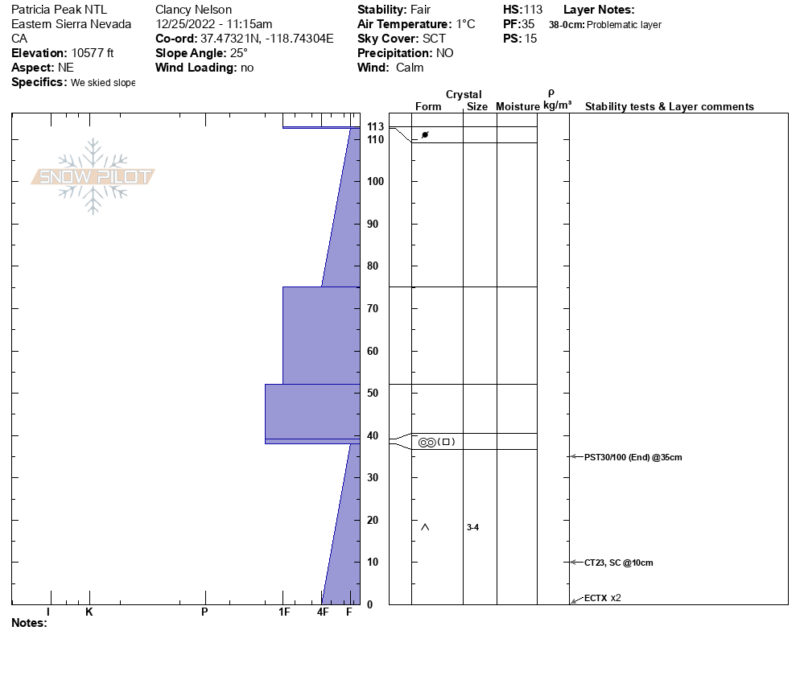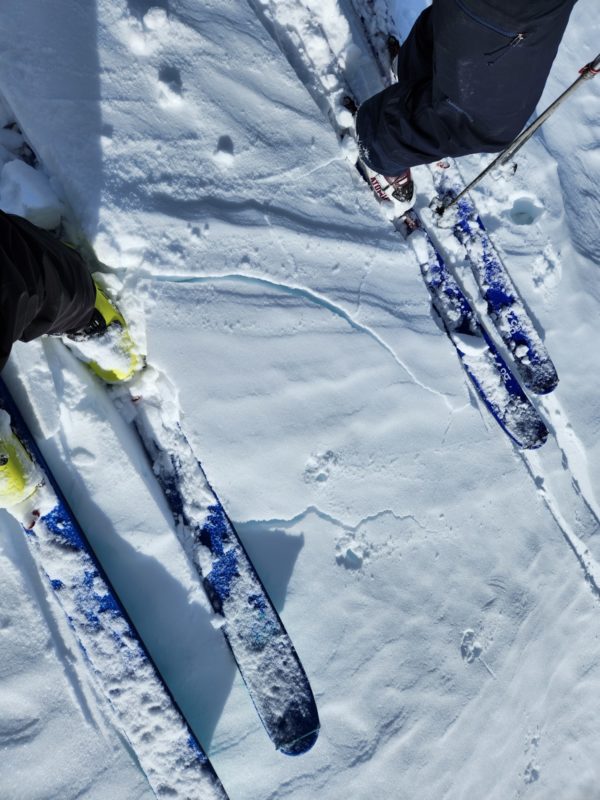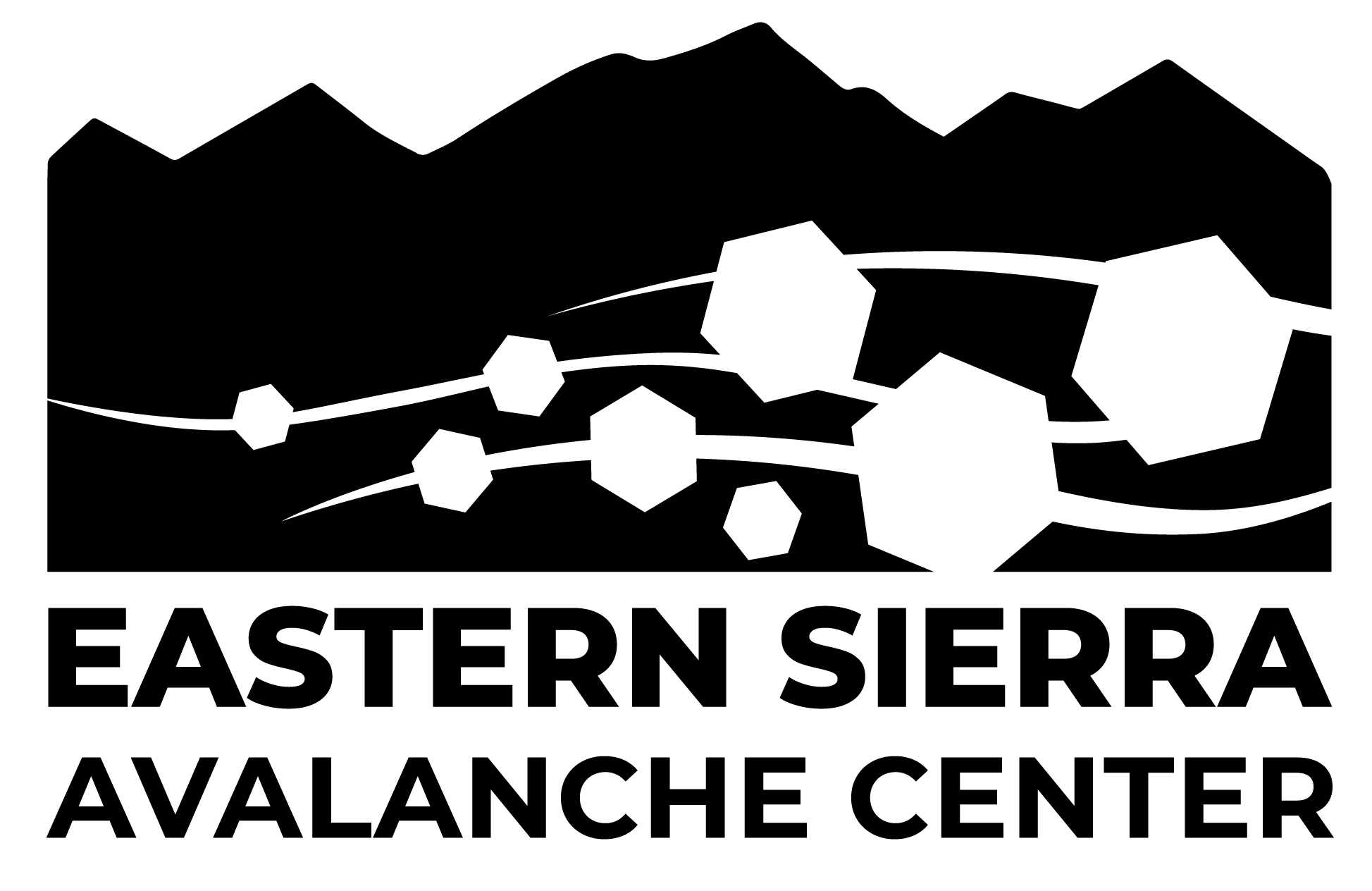Basic Information
Observation Details
Observation Date:
December 25, 2022 - December 25, 2022Submitted:
December 25, 2022Observer:
Clancy Nelson | ESAC ForecasterZone or Region:
Rock CreekLocation:
Rock Creek - Surfaces, Snowpack, And Warming Before The StormSigns of Unstable Snow
Recent Avalanches?
None ObservedCracking?
None ExperiencedCollapsing?
None ExperiencedSnow Stability
Stability Rating:
FairConfidence in Rating:
ModerateStability Trend:
ImprovingKey Points
We took a lovely holiday walk up Patricia Peak in Rock Creek to look at as many aspects and elevations as possible before an atmospheric river hits the East Side starting Monday night.
- The snowpack warmed more than we expected below 9500 feet, especially on solar aspects, in the trees and areas with a thin snow cover near rocks. We triggered some large rollerballs and sank to our knees in wet snow – with our skis on. We didn’t see any wet loose avalanches or natural rollers. We traveled on some steep slopes with wet snow in the afternoon and pinwheels were the only thing we triggered.
- New snow will fall on a variety of snow surfaces. The constant is poor snowpack structure near the ground on shaded aspects near and above treeline. On the upside, this is the first time I have seen improvement in the persistent weak layer in Rock Creek this season. We got no collapses or shooting cracks – a first! The facets are getting denser, and we got mixed test results – rather than repeated propagation – in our long column tests. The caveat is that a lot of water is on the way, and I still expect avalanches to fail on this layer after heavy and rapid loading.
Media


Advanced Information
Weather Summary
Cloud Cover:
Partly CloudyTemperature:
Above freezing to at least 11,500 feetWind:
Calm
Increasing clouds and balmy temps.
Snowpack Observations
Besides our profile at 10,500 feet, we also did an ECT on an east aspect at 11,600 feet in alpine terrain, 28 degree slope:
- HS 120, P hard slab over 4F basal facets. Ski pen = 5, boot pen = 25
- ECTN 30 down 33cm at the 4F interface between 1F+ wind deposits. CT 23 SC down 90cm in the basal facets.
Air temps were very warm, though Tsurf and T20 on northerly aspect near and above treeline showed plenty of gradient to drive near-surface faceting. Most of the NSFs we saw were about 1cm and F hard.
